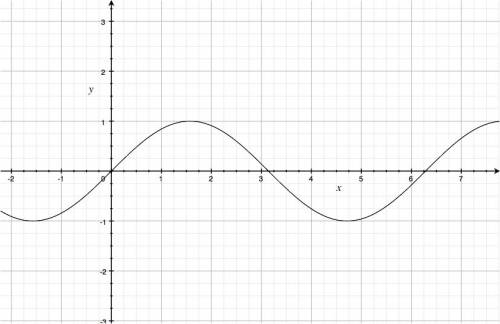The page you are reading is part of a draft (v2.0) of the "No bullshit guide to math and physics."
The text has since gone through many edits and is now available in print and electronic format. The current edition of the book is v4.0, which is a substantial improvement in terms of content and language (I hired a professional editor) from the draft version.
I'm leaving the old wiki content up for the time being, but I highly engourage you to check out the finished book. You can check out an extended preview here (PDF, 106 pages, 5MB).
Sine
Contrary to what religious leaders might lead you to believe, there is nothing wrong with $\sin$. At least not with the mathematical $\sin$. The sinus, sine or $\sin$ function tells you the ratio of the lengths of two sides in a right angle triangle.
Definition
Let us not talk about triangles, angles and lengths of sides for now, but think of the $\sin$ function as a generic function of $x$: \[ f(x)=\sin(x). \]
Properties
- The $\sin$ function is odd, which the mathematical term for saying:
\[ f(-x) = -f(x). \]
- The function is periodic, with period $2\pi$, that is:
\[ f(x) = f(x+2\pi). \]
- Relation to $\cos$: $\sin^2 x + \cos^2 x = 1$.
- Relation to $\csc$: $\csc(x) \equiv \frac{1}{\sin x}$ ($\csc$ is read cosecant).
- The inverse function is $\sin^{-1}(x)=\arcsin(x)$, and is not
to be confused with $(\sin(x))^{-1}=\frac{1}{\sin(x)} \equiv \csc(x)$.
Graph
The function starts from zero $\sin(0)=0$, then goes up to take on the value $1$ at $x=\frac{\pi}{4}$, then falls down until it crosses the $x$ axis at $x=\pi$.
After $\pi$ the function drops below the $x$ axis and reaches its minimum value of $-1$ at $x=\frac{3\pi}{2}$ only to come up again and repeat the $2\pi$-long cycle starting from $x=2\pi$.
We have $0=\sin(0)=\sin(\pi)=\sin(2\pi)=\sin(3\pi)=\cdots$, in fact $\sin(x)$ has a root at each multiples of $\pi$.


